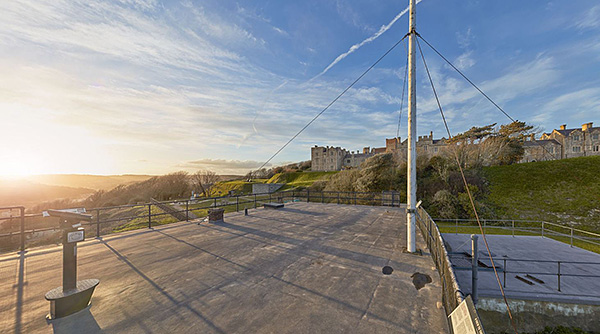Command, control and communication
The building began life in 1874 as a gun battery to defend Dover from attack by enemy ships. But by 1890 its guns had become obsolete, and from 1891 its structure was adapted, so that by the First World War it had two key roles.
On the lower floor it served as a Fire Command Post, controlling the coastal artillery around the harbour that protected Dover and the Straits of Dover. The floor on top of this, which was added in 1914, operated as a Port War Signal Station. From here the Navy controlled the movements of all ships in and out of the harbour, communicating with ships and other signal station using flags and wireless, and providing early warning of attack by enemy ships and aircraft.
These two installations played notable roles in both world wars.
Explore the building
Use this virtual tour to explore the Fire Command Post and Port War Signal Station and to find out more how the building operated in wartime. With the control panel (bottom right) you can toggle information on and off and view the tour full screen.
Please note that the tour works best on desktops and tablets.
360° panoramas © Pan 3Sixty
More about Dover Castle’s history
-

History of Dover Castle
Learn about the long history of the castle, from its likely origins as an Iron Age hillfort, through its development as a great fortress, to its secret role in the Cold War.
-
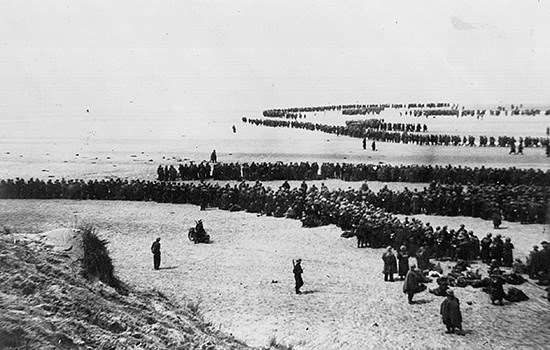
Operation Dynamo: Things You Need to Know
Find out the key facts about Operation Dynamo, the near-miraculous evacuation from Dunkirk in 1940, which was controlled from Dover Castle.
-
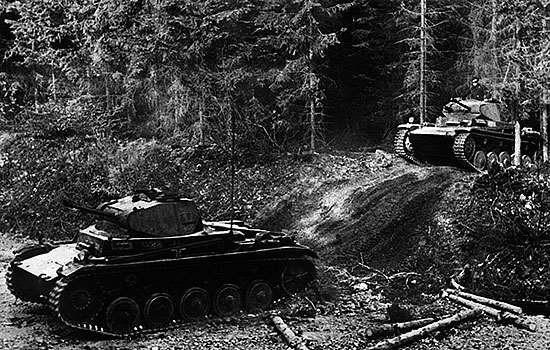
The Fall of France in 1940
On 22 June 1940 the French government surrendered to Hitler, just six weeks after the Germans’ initial advance westwards. Find out why France collapsed so quickly.
-
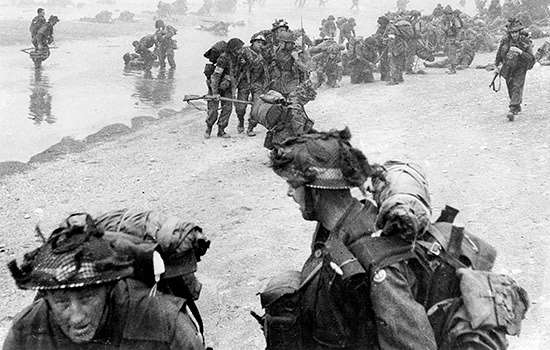
D-Day Deception: Operation Fortitude South
In 1944, Dover Castle’s tunnels played a supporting role in an elaborate deception that concealed the true location of the D-Day landings from the Germans.
-

Dover on the Front Line
This guidebook tells the story of how a network of tunnels beneath Dover Castle played a vital role in the Second World War.
-
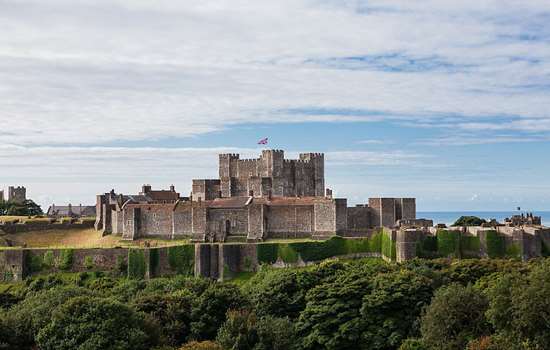
Visit Dover Castle
Immerse yourself in nine centuries of history at this most iconic of English fortresses, where you can still visit the secret wartime tunnels deep within the White Cliffs.
The Fortress Dover Project
Between 2014 and 2018, marking the centenary of the First World War, English Heritage, together with the Heritage Lottery Fund and The Friends of Dover Castle, embarked on a project to commemorate the story of Fortress Dover. Thanks to a grant of £272,600 from the Heritage Lottery Fund, the building housing the Fire Command Post and Port War Signal Station was painstakingly conserved and re-presented.
As a result of this project, it is now possible to experience what it might have been like to live and work in the building via a range of replica and original artefacts. The grant also made it possible to restore and conserve a British 3-inch gun, the only working example of just six left in the world. There are now regular gun-firing demonstrations each summer.
Visit the Fire Command Post
Working with our community
A key focus for the Fortress Dover project was engagement with the local community. Support from the Heritage Lottery Fund enabled us to involve local people in community events to raise awareness around Dover’s role in the First World War. These ranged from local education projects and children’s theatrical performances to film screenings and open evenings. An enduring legacy of the project is the involvement of local people in volunteering roles at Dover Castle. People from all walks of life have come together to explore their passion for history and help interpret Dover’s fascinating past for visitors.
Volunteer with English HeritageArmistice Day 2018
The culmination of the project was a day of commemorative activity held on 11 November 2018, the centenary of the armistice that ended the First World War. Volunteers from the Fortress Dover project joined veterans from the Royal Artillery Association in a service of remembrance at 11 o’clock, firing shots to mark the start and finish of the traditional two-minute silence. Members of the local community joined together at the castle to take part in commemorations throughout the day and after dark. In a fitting tribute to end the activities, the castle’s beacon joined thousands of others lit across the country to symbolise an end to the darkness of war and a return to the light of peace.
English Heritage would like to thank the National Lottery Heritage Fund and the Friends of Dover Castle for their support.

